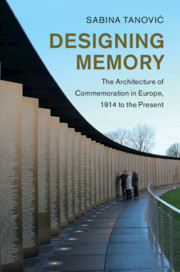Conclusion
Published online by Cambridge University Press: 08 November 2019
Summary
In its essence, architecture is a noble concept. Architectural creations are distinguished by their purposefulness. Residential buildings, public buildings or sacred buildings are all designed to fit their call within numerous written and unwritten rules of the profession. Principally, architects design spaces that answer multiple demands. Their success is measured through everyday use and the influence they will have on subsequent production of the built environment. The architecture we live in and encounter is beneficial for us in ways we are only just beginning to understand. Apart from serving a pure utilitarian function, the creation of spaces and forms that are appealing, elevating and impressive has been at the heart of architectural endeavour since ancient times. The concept of the sublime, for example, has continued to fascinate architects, and projects that deal with death and the destruction of life are intrinsic to architecture.
- Type
- Chapter
- Information
- Designing MemoryThe Architecture of Commemoration in Europe, 1914 to the Present, pp. 233 - 242Publisher: Cambridge University PressPrint publication year: 2019



